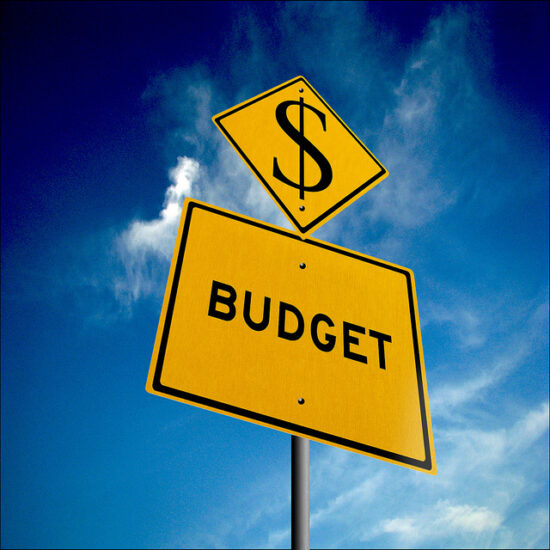
I call these the 3 life factors for maintaining a budget. Whether you’re single, married, have children and pets. Or, whether you live in the city or rural area. Your categories will be unique to you. That’s not to say you’re on your own when coming up with categories. There is a basic list of expense categories everyone should start with.
Let’s go over the biggest questions on the topic of budgeting categories. And to make it easier, I’ll give you two household budget examples that you can start with.
What Are Good Budget Categories To Have?
To start, your basic household budget categories will be
- Income
- Housing
- Transportation
- Food
- Debt
- Savings
- Personal
This is your primary category list. Everyone should have expenses that fall into one of these 7 categories. From there, you can create subcategories to go under each one.
Depending on your life, you may want to add other “primary” categories to this list. You’ll see that in the examples. The subcategories you choose will depend on three things: llifestyle, money goals and living situation. 
3 Life Factors for Maintaining a Budget

Your money goals are probably what pushed you to start a budget in the first place. Perhaps you’re trying to get rid of debt, find more money, build up savings, or just control where your money is going.
Your Living situation will dictate what subcategories you pick. Maybe you use public transportation and don’t have a car. Or, you have a car out of need because you live too far away from work. Maybe you have pets, or children, or both. Maybe you take care of elderly parents, or you foster children.
Start with the 7 primary budget categories, then tweak them to reflect your life factors. From there, your subcategories should fall into place. Now that you have an idea of where you’ll start tracking your money, the next question most people ask is…
How Many Budget Categories Should I Have?

Just don’t let things get out of hand.
Budget categories are like rabbits, they tend to multiply quickly if you’re not careful. Don’t create too many subcategories or you’ll end up tracking duplicate expenses.
I’ve done this with my Mint.com app. I started adding categories for every expense and ended up with over 100 subcategories. Too much for my comfort so I had to consolodate. For instance, everything I set aside for investments and savings get grouped up under an “All Savings” category. And anything that has to do with beauty treatments or cosmetics go under a Beauty tab that sits under my Personal tab.
The answer to the question, “how many budget categories do I need?” Is: as many as you need to track your money properly. Just don’t get overzealous with them.
Now that you’ve got an idea of what your primary budget categories should be, let’s go over two real-world examples of a household budget. 
The Family Budget
Take note that this household budget has 6 extra “main” categories in addition to the 7 that I mentioned in the beginning. Listed under each one will be the respective subcategories.
INCOME
- Job
- Other
- Business
HOUSING
- Mortgage/rent (Mortgage can be listed here or under Debt)
- Home insurance
- Trash & Sewer
- HOA
- Maintenance/home repair
Note: you could list Utilities under Housing if you’d like.
TRANSPORTATION
- Vehicle Debt (can be listed here or under Debt)
- Vehicle gas
- Vehicle Insurance
- Parking Bus/school bus fees
FOOD
- Groceries
- Restaurants/Eating Out
- School Lunch
- Pet Food (can be listed here or under its own primary category)
UTILITIES
- Trash/Sewer
- Water
- Electricity
- Gas/Propane
- Internet
- Television (Netflix, Hulu, Amazon, etc.)
PERSONAL
- Charity/Giving
- Clothing Adults
- Clothing Children
- Beauty Her
- Beauty Him
- After School Activities
- Pet Vet/Kennel (can be listed under its own primary category)
- Business expenses
EDUCATION
- Tuition
- Field Trips
- Books
- Supplies
HOUSEHOLD SUPPLIES
- Toiletries
- Cleaning Products
- Maintenance
- Tools
SHOPPING
- Birthday Gifts
- Amazon
- Seasonal Gift Giving
- Alcohol
- Seasonal Shopping
- Splurge Fund
HEALTH CARE
- Deductible
- Children
- Adults
HSA INVESTMENTS
- Roth IRA
- 401K
- Other
DEBT
You can set Debts within its respective category (like Transportation or Housing). Or you can put it on its own.
- Credit Cards
- Personal Loans
- Student Loans
- HELOC
- LOC
SAVINGS
- Emergency Savings
- Vacation
- Other
As you can see, this list is long. Don’t let that deter you from managing a budget. If you feel like you don’t want to manage so many subcategories, you can combine them. Set things like personal loans or HELOC’s under one category called Loans, put all debt under the Debt category, or combine Investments and Savings under one Savings category. 
The Single’s Budget
Here’s an example of a single person living in the city with easy access to public transportation. There are 5 extra categories in addition to the main 7.
INCOME
- Job
- Other
HOUSING
- Mortgage/rent (Mortgage can be listed here or under Debt)
- Home/rental insurance
- Maintenance/home repair
You can list Utilities under Housing if you’d like.
TRANSPORTATION
- Public Transportation (bus, taxi, train, subway)
- Bike parking
- Licensing
FOOD
- Groceries
- Restaurants/Eating Out
UTILITIES
- Trash/Sewer
- Water
- Electricity
- Gas/Propane
- Internet Television (Netflix, Hulu, Amazon, Cable or Satellite)
PERSONAL
- Charity/Giving
- Clothing & Shoes
- Entertainment
- Hobbies
- Household supplies
EDUCATION
- Tuition/Online Courses
- Books
- Supplies
SHOPPING/SPLURGE
These can also sit under the Personal category for simplicity
- Birthday Gifts
- Amazon
- Seasonal Gift Giving/Shopping
- iTunes
INVESTMENTS/SAVINGS
- Roth 401K
- Emergency Fund
- Vacation Fund
HEALTH CARE
- Deductible
- HSA
DEBT
You can set Debts within its respective category (like Transportation or Housing). Or you can put it on its own.
- Credit Cards
- Personal Loans
- Student Loans
- Line of Credit
Other Budget Categories

Final Thoughts
The two examples listed above are just examples of typical household budgets. What your budget ends up looking like will depend on you. Some people love to spend hours managing their budget and some people don’t. Let that be your measurement when deciding how many categories you need.
If you don’t mind spending the extra time, use more categories. If not, consolidate as many as you can. And as you move forward with your budget, you’ll find the expenses you started out with are no longer needed. Every month will be different.
What Does Your Budget Category List Look Like?
How many budget categories are you tracking on your budget? Have you consolidated any expenses to keep your budget manageable? Let us know in the comment section.
Christine C. Renee has been a freelance blogger since 2015. She works with B2C clients and professional bloggers to create engaging and helpful online content. Her passions are for writing, learning, and talking about money and the joys of freelancing. She has a background in business management and offers her freelancing services for blog articles, ghostwriting, and editing/proofreading. Find out if her energetic and friendly writing style is right for your blog and business.
Comments